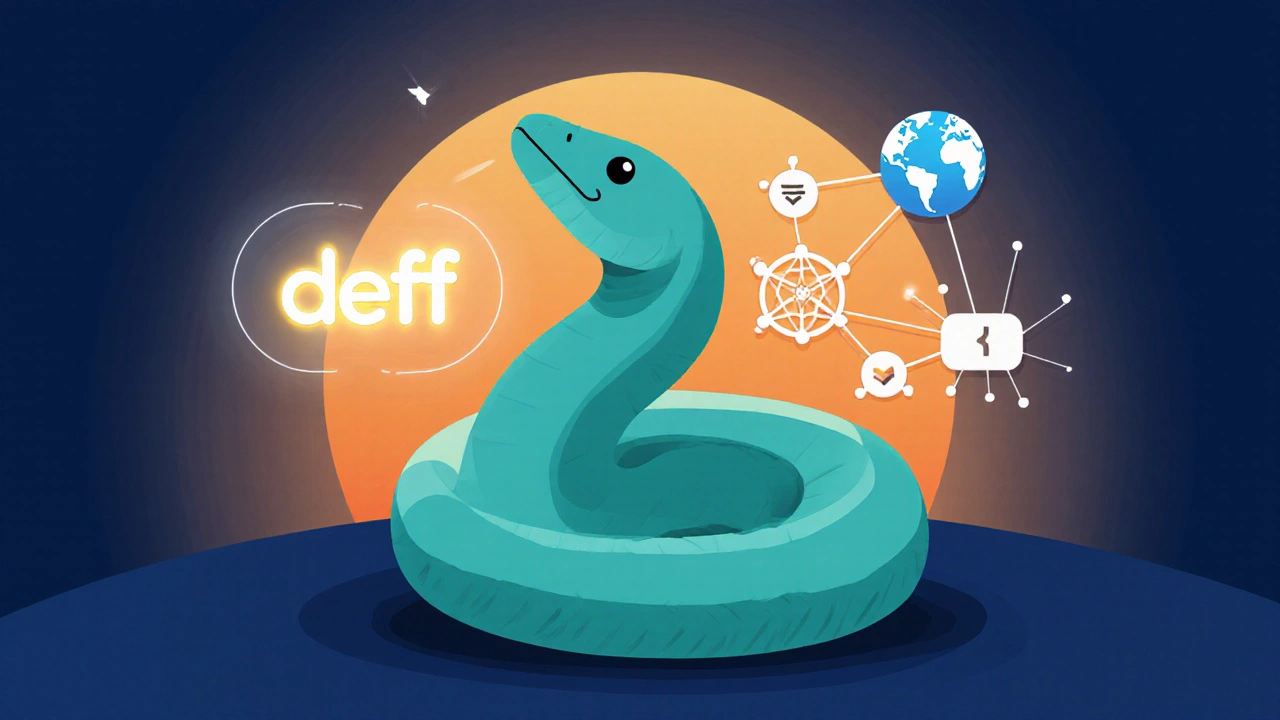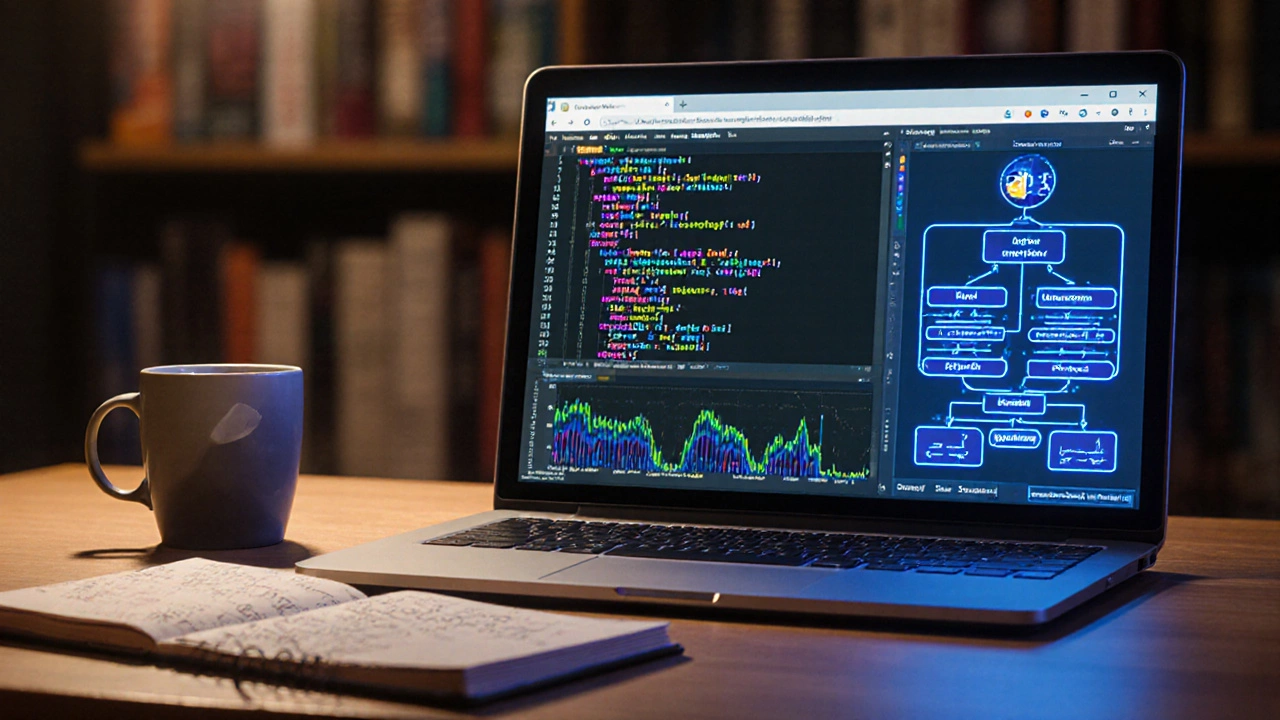Oct
23

- by Dhruv Ainsley
- 0 Comments
Python Stack Selector
Python is a high‑level, interpreted programming language known for its readability and versatility. If you’re wondering why it shows up in every tech talk, the answer lies in how broadly it can be applied. From powering massive web platforms to crunching scientific data, Python uses span dozens of industries and skill levels.
Why Python Became the Go‑To Language
First, the language’s clean syntax lowers the barrier for beginners while still offering depth for experts. Second, an enormous ecosystem of libraries lets you pick a tool for almost any task. Finally, cross‑platform support means you can run the same code on Windows, macOS, Linux, or even embedded devices.
Python in Web Development
When you visit a site built with Instagram, Pinterest, or Spotify, chances are a Python framework is serving the backend. The most popular framework is Django - a batteries‑included web framework that handles authentication, routing, and database mapping out of the box. For lighter projects, Flask offers a micro‑framework approach where you add only the extensions you need. Both let you write server‑side logic in a few lines, speeding up development cycles.
- Rapid prototyping: Create a functional API in hours.
- Scalable architecture: Django’s ORM works with PostgreSQL, MySQL, and SQLite.
- Community plugins: Thousands of reusable apps for payments, admin panels, and more.
Python for Data Science & Machine Learning
Data scientists swear by Python because of libraries like NumPy - the foundation for numerical computing and Pandas - the go‑to tool for data manipulation and analysis. When you need to build predictive models, TensorFlow and PyTorch provide the deep‑learning engines that power image recognition, natural‑language processing, and recommendation systems.
Typical workflow: load raw CSV with Pandas, clean it, transform numbers with NumPy, split data, and feed it into a TensorFlow neural network. The whole pipeline can be written in a single Jupyter notebook, making experimentation fast and reproducible.

Automation, Scripting, and DevOps
System administrators love Python for quick scripts that automate repetitive tasks. Need to rename thousands of files? A few lines using os and shutil do the job. For larger orchestration, the Ansible automation platform uses Python modules under the hood, letting you manage servers at scale.
Python also powers popular DevOps tools like Docker SDK and kubectl wrappers, bridging the gap between code and infrastructure.
Education, Research, and Prototyping
Because of its gentle learning curve, Python dominates introductory programming courses worldwide. Universities use it for algorithm teaching, while researchers rely on libraries such as SciPy for scientific computing and Matplotlib for visualizing results. Its REPL (Read‑Eval‑Print Loop) lets you test snippets instantly, which is ideal for rapid prototyping.
Choosing the Right Python Stack - A Quick Comparison
| Domain | Core Libraries | Popular Frameworks | Common Use Case |
|---|---|---|---|
| Web Development | Django, Flask, FastAPI | Django, Flask | Build REST APIs, CMS, e‑commerce sites |
| Data Science | NumPy, Pandas, SciPy | Jupyter, Spyder | Statistical analysis, data cleaning |
| Machine Learning | TensorFlow, PyTorch, scikit‑learn | Keras (TF), Fastai (PyTorch) | Image classification, NLP, recommendation engines |
| Automation | os, subprocess, paramiko | Ansible, SaltStack | File handling, server provisioning |
| Education & Research | Matplotlib, seaborn, SymPy | Jupyter Notebook | Teaching programming, prototyping algorithms |
Common Pitfalls and Pro Tips
- Version mismatch: Always specify a
requirements.txtorpyproject.tomlto avoid “works on my machine” errors. - Global interpreter lock (GIL): For CPU‑bound tasks, consider multiprocessing or using C‑extensions like NumPy which release the GIL.
- Virtual environments: Keep projects isolated with
venvorconda. This prevents library clashes. - Readability first: Stick to PEP 8 style guidelines; clean code is easier to maintain, especially in collaborative projects.
Frequently Asked Questions
Is Python suitable for mobile app development?
Python isn’t the first choice for native mobile apps, but tools like Kivy, BeeWare, and Chaquopy let you write Python code that runs on Android and iOS. Performance may lag behind Java/Kotlin or Swift, so it’s best for prototypes or apps with heavy backend logic.
Can I use Python for real‑time systems?
Python’s interpreter overhead makes true hard‑real‑time difficult, but for soft‑real‑time tasks-like monitoring dashboards or IoT data collection-it works fine. Critical loops can be offloaded to C extensions or compiled with Cython.
What’s the difference between Python 2 and Python 3?
Python 3 introduced Unicode strings by default, better syntax for exceptions, and many standard‑library improvements. Python 2 reached end‑of‑life in 2020, so new projects should always start with Python 3.x.
How does Python compare to Java for enterprise back‑ends?
Java offers static typing and generally higher raw performance, which enterprises value for large‑scale, latency‑sensitive systems. Python wins on development speed, readability, and a richer data‑science stack. Many firms use both: Java for core services, Python for analytics and glue code.
Is Python good for beginners with no programming background?
Absolutely. Its syntax mirrors plain English, so learners can grasp concepts like loops and functions without wrestling with punctuation. Most introductory coding courses-online or in‑person-choose Python as the first language.
Whether you’re building a website, training a machine‑learning model, or automating daily chores, Python offers a clear path from idea to implementation. Pick the right libraries, keep your environment clean, and you’ll find the language fits more use cases than you imagined.





